Yokohama Geolandar M/T vs Cooper AT3: Yokohama Geolandar M/T is a Mud Terrain tire while Cooper AT3 is an All-Terrain tire, which means Yokohama M/T performs well off-road because the grooves are wider and the blocks are spaced at larger distances, resulting in a higher void ratio. Whereas, Cooper AT3 performs well on-road because there are narrow grooves, and the blocks are closely spaced, resulting in a higher contact patch.
Yokohama acts as an excellent shock absorber providing good off-road comfort, while Cooper produces very little noise providing good on-road comfort. Read further to know more about the facts and features of both tires.
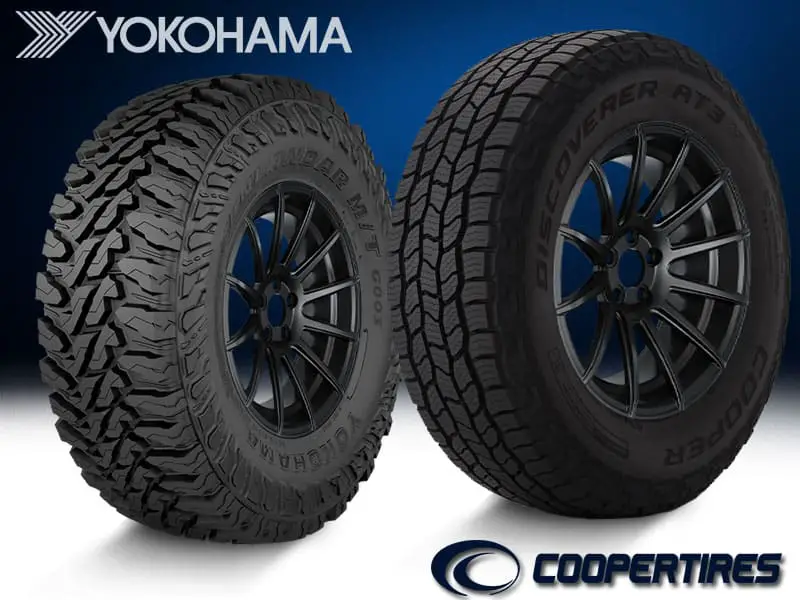
Examine the treads on these tires closely. They hold the key to knowing which to choose. In fact if you visit my "tread design" page, picking the right tire would never bother you.
Table of Contents
Comparing Cooper AT3 XLT with Yokohama Geolandar MT
Yokohama Geolandar M/T
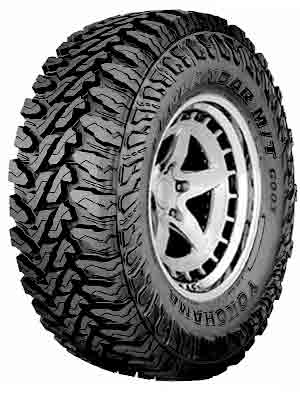
Cooper AT3 XLT
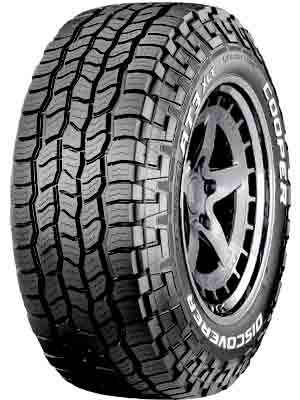
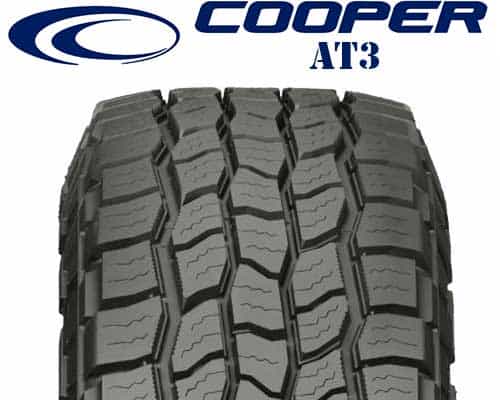
Vs

Geolandar M/T performs magnificently off-road because the design of the tread is such that the blocks are spaced at a much larger distance resulting in much wider grooves which makes the tires grip efficiently off-road. It also works perfectly in resisting hydroplaning because the wider grooves cause the water to pass easily through the tread in the backward direction and efficiently handle wet roads. It offers excellent performance on mud and snow terrain because the wider grooves and widely spaced blocks prevent the mud and soft snow particles from getting stuck within them. It makes the tire grip firmly on such terrains, throwing the mud/snow particle backward to move forward efficiently. It also shows a good performance on rocky terrain because of various large stone ejectors within the wider grooves. The noise produced by this tire is relatively high as the air particles can easily be trapped into the larger empty spaces and hit back and forth within the grooves, creating more noise.
Cooper AT3 performs perfectly on-road because numerous smaller blocks are closely spaced on the tread, resulting in much narrower grooves that cause the tire to grip efficiently. It doesn’t offer good resistance against hydroplaning because the constricted spaces prevent the water from passing through the tread easily, and the tire may lose grip on wet roads, resulting in hydroplaning. It doesn’t show a good performance on mud and snow terrain because the narrow grooves and closely packed blocks cause the mud and soft snow particles to get stuck within them. It causes the tire to lose grip on such terrain as it cannot throw the mud/snow backward, and the tire may slip. Various stone ejectors within the constricted voids cause it to perform moderately on rocky terrain. It produces very little noise due to the close arrangement of blocks; tiny spaces are left within them, preventing the air particles from getting trapped and hitting; hence, very little noise is produced.
On-road Traction Comparison
Geolandar M/T doesn’t provide good on-road traction because of the higher void ratio. The broader grooves and extensively spaced blocks make it difficult for the tire to maintain good on-road grip, resulting in a poor experience. It is perfect for preventing hydroplaning because the hollow spaces cause the water to get passed through the tread easily and make the tire maintain a good grip in such situations.
AT3 provides excellent on-road traction because of the higher contact patch. The broader grooves and closely packed blocks provide a perfect on-road grip by the tire, resulting in a good experience. It is not good in preventing hydroplaning because there is not much space within the blocks for the water to pass through, which results in the loss of grip in such situations, thus, causing hydroplaning.
Off-road Traction Comparison
Mud Terrain
Geolandar M/T performs superbly on mud terrain because the grooves are wider and blocks are spaced at a more significant distance. There are no chances of the mud particles getting trapped in such tread; the wider grooves easily throw the mud backward. The tire maintains its grip on mud terrain and performs effectively without any barrier.
AT3 doesn’t show a good performance on mud terrain because the grooves are narrow within the tightly packed blocks, so there are chances for the mud particles to get trapped within these grooves. The tire may lose grip in such a situation, and it becomes difficult to handle.
Snow Terrain
M/T works effectively on snow terrain because the larger voids and arrangement of blocks are such that the particles of soft snow cannot be trapped into them. The void ratio is high, which causes the tire to throw the snow backward, maintaining a good grip and moving forward effectively. But such arrangement of blocks and grooves is not suitable for icy terrain, so it doesn’t perform well on ice. Due to lower contact patch and fewer sipes, the tire can be difficult to handle and lose grip.
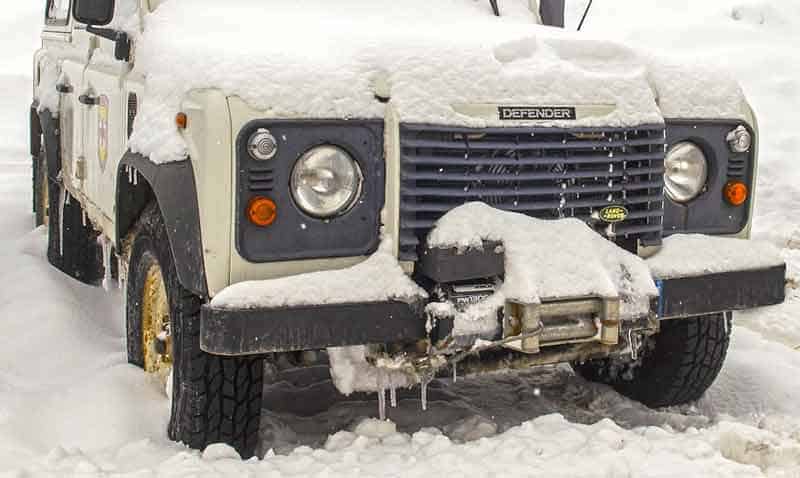
AT3 doesn’t work effectively on snow terrain because the narrow grooves and overcrowded blocks make the particles of soft snow get stuck within them. The tire loses grip and can get slippery, performing poorly on soft snow terrain. But such arrangement of blocks and grooves is excellent for icy terrain, so it performs better on ice. Due to higher contact patch and various sipes, the tire sustains its grip on ice, resulting in better traction.
Rock Terrain
Yokohama performs efficiently on rocky terrain because of the larger grooves and widely spaced blocks which allow a good grip on steeper rocks. Moreover, various stone ejectors also prevent the trapping of any rock particle resulting in good grip and protecting the tire from stone damage.
Cooper AT3 performs moderately on rocky terrain because of stone ejectors within the grooves, and Decent built standard, preventing the tread from stone damage contributing to its durability. But there are chances for the rock/pebble particles to be trapped within the constricted grooves due to smaller stone ejectors and compacted blocks affecting its performance by providing a lower grip on rocks.
Which tire is more Comfortable?
Yokohama acts less inflated and provides excellent shock absorbance on a bumpy road. There are hollow spaces within distant blocks resulting in a lower contact patch, providing exceptional off-road comfort. It doesn’t offer much on-road comfort because of the broader grooves where air particles can be trapped easily, causing more noise hitting back and forth within the grooves.
AT3 acts as more inflated and is not good in absorbing shock on a bumpy road because there are constricted voids within closely spaced blocks, resulting in a higher contact patch, so it doesn’t offer much off-road comfort. But it provides superb on-road comfort because there is not much space for the air particles to get trapped and strike its grooves walls; hence, very little noise is produced.
Durability and Treadwear Differences
The compound used in the tread of Yokohama is of high-density triple polymer. The Geo-shield structures contain numerous steel belts, sidewall plies, a high turn-up carcass, and a full nylon cap for additional protection. It provides a wear guarantee of the first 2/32 inch for all sizes on tire’s uniformity.
Cooper AT3 utilizes a durable-Tread Technology. A cut and chip-resistant blend is a vital feature specifically improved for excellent durability and traction. Stone ejector projections prevent the tread by kicking sharp gravel. It is secured up to 65,000 miles by the treadwear protection warranty.
Price Differences
Yokohama’s price is slightly high compared to AT3 because of the unique technology and high-quality material used to make the tread rugged, so it performs perfectly off-road.
Quick Summary
- Yokohama Geolander is Mud Terrain while AT3 is All-Terrain tire.
- Yokohama gives better off-road performance while Cooper gives a good on-road performance.
- Yokohama works efficiently on mud, snow, and rocky terrain, while Cooper AT works better on ice.
- Yokohama provides more off-road comfort while Cooper provides more on-road comfort.
- There is not much difference in durability and treadwear of both; you can equally rely on both in terms of durability.








